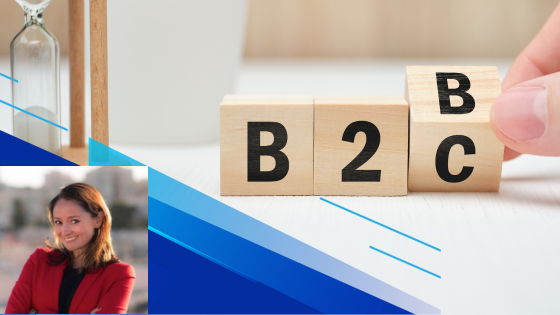B2B E-commerce is predicted to reach $3 trillion in the U.S. by 2027, up from $1.7 trillion in 2021. The rise in digital buying and selling illustrates the accelerated need for B2B digital transformation, which means companies need to provide a purchasing experience that lives up to the expectations of their customers.
The average B2B customer is also a digital consumer in their personal life and is used to the convenience of a B2C E-commerce experience. Customers now expect the same level of seamlessness from any B2B company they give their business to. Additionally, the newest generation of both buyers and sellers have high expectations for the modern digital shopping experience.
To reach today’s tech-savvy customers, convenience and technical prowess throughout the buying experience are no longer preferred but required. B2B practitioners must find the elements of B2C E-commerce that can be borrowed to create an effortless customer experience while also providing customers with competitive prices, product recommendations and real-time sales support.
Striking A Balance Between B2B & B2C
There are many aspects of the E-commerce experience that B2B sellers can borrow from B2C. However, it’s also important to acknowledge that the goal is not for B2B sellers to perfectly replicate a B2C experience, as there are inherent differences between B2B and B2C buyer expectations and needs. For example, B2B purchases are typically complex, with a drawn-out buying process that involves multiple stakeholders.
From a customer experience perspective, B2B sellers must figure out where it makes sense to bring in consumer-like elements of the purchasing experience. At the same time, there will always be customers that want to talk to a sales rep directly.
The ideal B2B customer journey is nuanced, and while some elements can be borrowed from B2C, there will always be needs that are unique to the B2B buying experience.
Powering Omnichannel Success
To power a seamless customer experience throughout the buyer journey, B2B companies must master the art of a smooth cross-channel handoff. Suppose a customer starts in a self-service environment but then wants to speak to a sales rep on the phone. In that case, the transition should be seamless, and the sales rep should acknowledge the upfront work the customer completed when browsing online. If there is dissonance between the customer’s experience in one channel versus the other, it can create friction in the buying process.
Sales reps in B2B must also recognize the unique needs of each account and match them across multiple touch points throughout the buying experience. B2B businesses actually have a unique advantage over B2C here: Since B2B transactions are typically more long-term partnerships, sellers often have a better sense of who their customers are and their unique expectations.
Customers want to pay for what they use, and every business is thinking about recurring revenue models to deliver value to customers. The key is continually earning customers’ trust every week, month or however long their subscription cadence is. Every time a customer’s subscription is up for renewal, it creates an opportunity to either lose or win back a customer.
The challenge (and opportunity) for B2B businesses is ensuring they deliver premium customer experiences throughout every point of interaction. Retaining existing customers is always cheaper than getting new ones, and customer loyalty and experience must be central to the B2B journey.
Defining The B2B Buying Journey
It is also important to acknowledge that strategies for creating an ideal purchasing experience can and should vary greatly depending on the nature of the product, even within the realm of B2B. For example, with a product that’s low complexity and higher volume, you likely want most customer interactions to be self-service since customers know what they want and expect immediate responses.
On the other hand, if you have a complex product that requires more guidance for customers, there might be a bigger emphasis on interactions with sales reps. With complex products and big-ticket items, customers often have difficulty choosing the right solution and need more guidance throughout the purchasing process. So, the buying experience for new customers must be carefully mapped out along with the experience for secondary purchases. Defining the buying journey based on your go-to-market motion and brand position is of the utmost importance.
The Future Of B2B E-Commerce
As technology continues to progress, customer experience standards will only keep rising. Transparency around the pricing process is no longer a preference but a demand. Additionally, we live in an age of instant gratification. Customers expect instant access to the product once purchased, and companies must adjust their strategy to ensure that’s possible.
The advancement of generative AI and machine learning is also revolutionizing how companies operate. These new technologies can reduce the burden of manual tasks for employees and allow them to focus on setting goals and bringing visions to life. Leveraging these new technologies to optimize workflows and maximize employee productivity will be essential to stay afloat in the new era of B2B E-commerce.
B2B and B2C customers alike want to feel understood, appreciated and valued. As businesses of every variety face tighter budget constraints and an increasingly demanding audience, flexibility and the ability to adapt to the ever-changing customer landscape will be the key to long-term success.
Kylie Fuentes is the Chief Product Officer of Zilliant, a B2B sales and pricing software.







